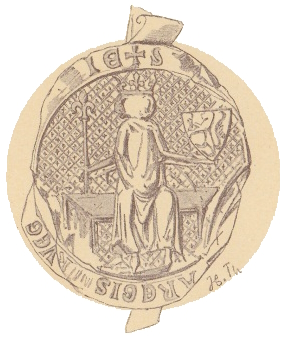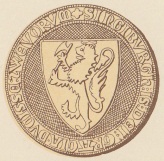Related Research Articles
Year 1359 (MCCCLIX) was a common year starting on Tuesday of the Julian calendar.
The 1350s was a decade of the Julian Calendar which began on January 1, 1350, and ended on December 31, 1359.
The 1360s was a decade of the Julian Calendar which began on January 1, 1360, and ended on December 31, 1369.

Year 1227 (MCCXXVII) was a common year starting on Friday of the Julian calendar.
The 1370s was a decade of the Julian Calendar which began on January 1, 1370, and ended on December 31, 1379.

Year 1470 (MCDLXX) was a common year starting on Monday of the Julian calendar.
Year 1361 (MCCCLXI) was a common year starting on Friday of the Julian calendar.
Year 1375 (MCCCLXXV) was a common year starting on Monday of the Julian calendar.
Year 1412 (MCDXII) was a leap year starting on Friday on the Julian calendar.

Year 1208 (MCCVIII) was a leap year starting on Tuesday of the Julian calendar.

Albert was King of Sweden from 1364 to 1389 and Duke of Mecklenburg-Schwerin from 1384 to 1412.

Magnus IV was King of Sweden from 1319 to 1364, King of Norway as Magnus VII from 1319 to 1355, and ruler of Scania from 1332 to 1360. By adversaries he has been called Magnus Smek.

Haakon VI, also known as Håkan Magnusson, was King of Norway from 1343 until his death and King of Sweden between 1362 and 1364. He is sometimes known as Haakon Magnusson the Younger to distinguish him from his great-grandfather, Haakon V.

Valdemar IV Atterdag, or Waldemar was King of Denmark from 1340 to 1375. He is mostly known for his reunion of Denmark after the bankruptcy and mortgaging of the country to finance wars under previous rulers.

Blanche of Namur was Queen of Norway and Sweden as the wife of King Magnus VII / IV.

Euphemia of Sweden was a Swedish princess. She was Duchess consort of Mecklenburg, heiress of Sweden and of Norway, and mother of King Albert of Sweden. (c. 1338-1412) .

The Battle of Visby was fought in 1361 near the town of Visby on the island of Gotland, between the forces of the Danish king and the Gutnish country yeomen. The Danish force was victorious.

Ingeborg of Norway, was a Norwegian princess and by marriage a Swedish royal duchess with a position in the regency governments in Norway (1319–27) and Sweden (1319–26) during the minority of her son, King Magnus of Norway and Sweden. In 1318–1319, she was Sweden's de facto ruler, and from 1319 until 1326, she was Sweden's first de jure female regent. Her role in northern European history is considered of major importance.

Ingeborg, Duchess of Öland was a Norwegian princess and a Swedish duchess. She was Duchess of Uppland, Öland and Finland. As a widow, she had a seat in the regency government of her nephew Magnus, who reigned as king of both Sweden and Norway.

The House of Estridsen was a dynasty that provided the kings of Denmark from 1047 to 1412. The dynasty is named after its ancestor Estrid Svendsdatter. The dynasty is sometimes called the Ulfinger, after Estrid's husband, Ulf Jarl. The dynasty also provided three medieval rulers of Sweden and one of Norway. Their family coat of arms became the coat of arms of Denmark and therefore influenced the coat of arms of Tallinn and the coat of arms of Estonia.
References
- Chronology of Sweden". worldtimeline.info. Retrieved June 15, 2023.
- Nordberg, Mikael (2003). I kung Magnus tid (In the Times of King Magnus) ISBN 91-1-952122-7
- Sumption, Jonathan (2001). The Hundred Years' War. Vol. II: Trial by Fire. University of Pennsylvania Press.
- Vernadsky, George (1966). "The Mongols and Russia".